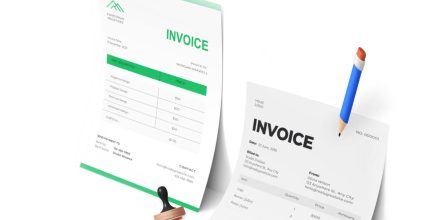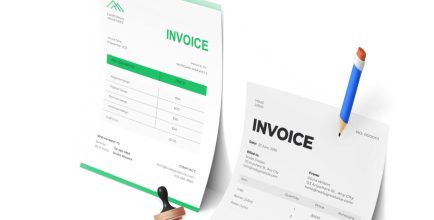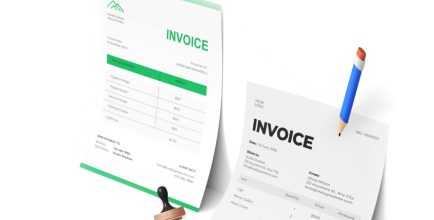Creating Compelling Subject Lines
Importance of Clarity and Urgency
Crafting subject lines that are both clear and imbued with a sense of urgency is paramount in email marketing, especially when the goal is to prompt timely invoice payments. A subject line that distinctly communicates the email’s purpose while also signaling the necessity of swift action stands a greater chance of being opened and acted upon. Striking the right balance between informativeness and urgency without veering into alarmism encourages engagement instead of avoidance.
Personalization Techniques
Incorporating personalization techniques, such as using the client’s name or company name in the subject line, significantly increases the probability of the email being noticed in a crowded inbox. Personalization conveys a sense of importance and directness to the recipient, making the message feel specifically crafted for them. This tailored approach fosters a stronger connection and can enhance the overall effectiveness of the communication.
Optimizing Timing for Email Send-outs
Best Practices for Timing and Frequency of Reminders
Identifying the right timing for sending out reminder emails is crucial for their effectiveness. Research has shown that emails sent in the middle of the week, particularly from Tuesday to Thursday, receive higher open rates. This could be due to clients being more engaged in their work routines, making them more likely to address incoming emails. Sending emails in the late morning, around 10-11 AM local time, may also increase the chances of your email being seen and acted upon.
When it comes to frequency, it’s important to strike a balance to ensure persistence without overstepping. A gentle reminder should be sent shortly after the invoice becomes overdue, followed by follow-ups at two-week intervals if necessary. Each reminder should gradually increase in urgency but always maintain a professional tone. Adapting your strategy based on client responses and behavior is crucial for maintaining positive relations while securing timely payments.
Crafting the Email Content
Initial Invoice Reminder: Content Strategies for the First Reminder Email
The first reminder email should encapsulate politeness and professionalism, subtly nudging the client toward settling their invoice without causing any alarm or offense. Begin with a friendly greeting, incorporating the client’s name for a personal touch. The body of the email should remind the client of the invoice in question, providing details such as the invoice number, the services or products provided, and the payment due date. It is vital to express understanding and willingness to assist if there are any discrepancies or issues preventing the payment. Closing the email with a courteous call to action and offering assistance reinforces the message’s professional yet considerate tone.
Follow-up Communications: Escalating the Tone Politely
In subsequent reminders, it’s essential to escalate the tone slightly to convey urgency while remaining polite. The subject line can reflect this by incorporating words that signal immediate attention is needed, such as “urgent” or “action required,” yet remain respectful. The content should acknowledge any previous communication and express understanding, yet clearly state the invoice remains unpaid and needs to be settled promptly. Reminding the client of any late fees or interest as per your payment terms can be done tactfully to avoid perceived aggression.
Inclusion of Payment Instructions and Invoices
Each reminder email must include clear instructions on how to proceed with the payment to remove any barriers to settling the invoice. Provide direct links to online payment portals, if available, or concise instructions for traditional payment methods. Attaching the invoice or including a link to a downloadable copy ensures that the client has all the necessary information at their fingertips, facilitating quicker resolution.
Personalization and Empathy in Communication
Understanding Client Circumstances
It’s crucial to tailor reminder emails to reflect any challenges or issues previously communicated by the client. This shows that your business listens and cares, fostering a positive relationship. Acknowledge any ongoing discussions or resolutions being worked on and offer flexibility where possible to accommodate their situation.
Empathetic Tone
Crafting messages with an empathetic tone can significantly impact how the reminder is received. Use language that expresses an understanding of potential financial constraints or unforeseen circumstances facing the client. However, it’s important to balance empathy with the need to convey the importance of settling the invoice promptly. Expressing empathy while gently reminding them of their commitment can encourage a more immediate response without damaging the relationship.
Using Automated Email Campaigns
Setting Up Automated Reminders
Automating the invoice reminder process can significantly improve efficiency while maintaining the personalized touch that is critical for effective communication. Automation tools allow businesses to schedule reminder emails based on the invoice due dates automatically. To ensure these automated emails seem personal and targeted, use dynamic fields such as the client’s name, company, invoice number, and due date.
This technique ensures each recipient feels the message is crafted specifically for them, even though it’s automated. Tailoring the escalation in the tone of reminders based on how overdue the invoice is can also be automated, yet it appears conscientiously crafted for each situation.
Integration with Invoice Management Systems
Integrating your email campaigns with your invoice management software is a powerful step to streamline the entire communication process. Look for invoice management solutions that offer API access or built-in email functionalities that support integration with email marketing platforms. This integration allows for real-time updates to customer data, ensuring that reminders are only sent for outstanding invoices and are halted once payment is received.
Additionally, it enables tracking interactions such as email opens and clicks, giving insights into how recipients are engaging with your reminders. When setting up the integration, pay attention to the customization options available to ensure that your automated reminders maintain the personal and empathetic tone that is crucial for preserving positive customer relationships.



